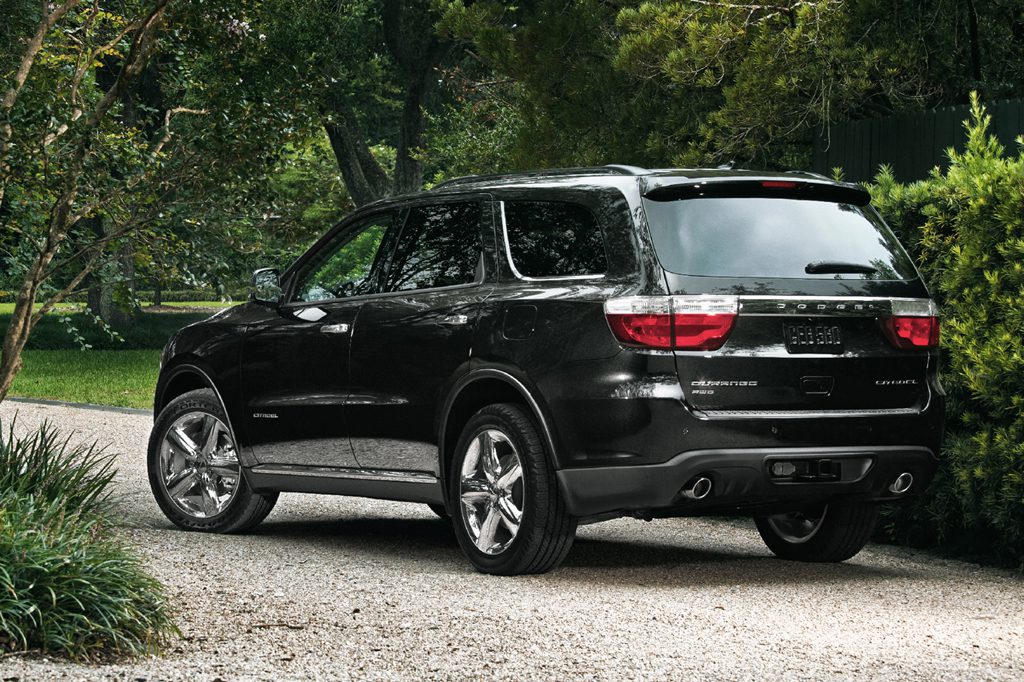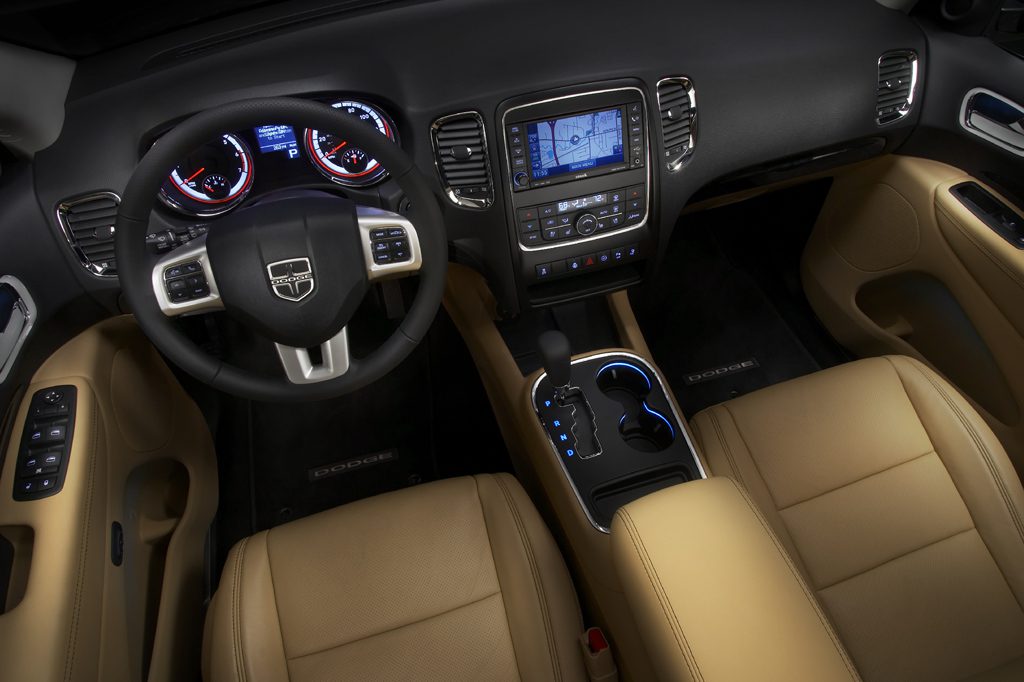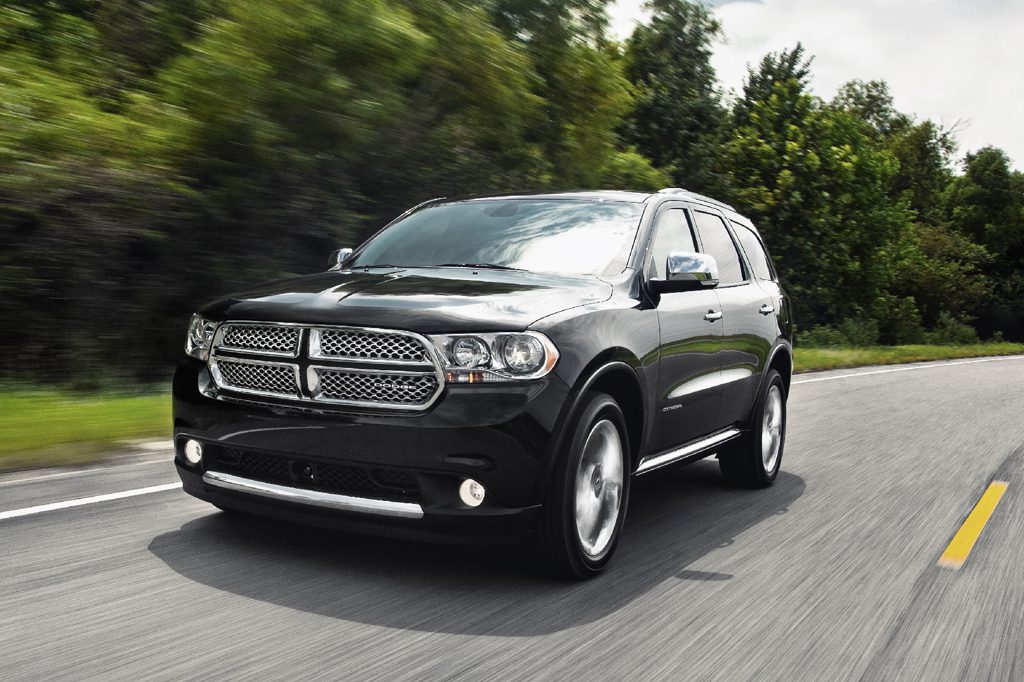| Midsize SUV; Built in USA |
|
|
| Good condition price range: $12,700 – $38,000* |

2011 Dodge Durango Front

2011 Dodge Durango Rear

2011 Dodge Durango Interior

2011 Dodge Durango Front-2
| Pros: |
|
| Cons: |
|
Dodge’s revamped Durango exudes style and comfort. Availability of a V8 engine is unique among seven-passenger crossover SUVs. Its ride and handling balance is also surprisingly good. At the same time, this is a large, heavy vehicle. Durango’s EPA estimates, as well as our as-tested fuel economy, score at the bottom of the pack. When new, pricing for the base Express and volume Crew models was aggressive. The top-line Citadel was expensive, but it came standard with most every luxury and convenience feature buyers could want. Each model could be a good value on the used-vehicle market. Heat and R/T versions bring a sporty flair not often found in this class of vehicles. Though Durango is a late entry to the “large-midsize” seven-passenger crossover segment, it’s a very credible and Recommended (2012)alternative to established players, such as the GMC Acadia, Honda Pilot, and Mazda CX-9.
Overview
Following a hiatus during the 2010 model year, Dodge redesigned its Durango sport-utility vehicle as a 2011 model, adopting crossover status. The previous-generation Durango, which was last sold during the 2009 model year, had used traditional truck-type construction and was positioned above the Dodge Nitro in size and price. Borrowing elements of its new car-type unibody design from the 2011 Jeep Grand Cherokee, the 2011 Durango seated up to seven. Trim levels included base Express, mid-level Crew, along with a top-line Citadel. Also offered were sport-themed Heat and R/T editions. A 290-horsepower, 3.6-liter V6 engine was standard on all but the R/T. Optional on the Crew and Citadel and standard on the R/T was a 360-horsepower, 5.7-liter V8 that incorporated Chrysler’s Multi-Displacement System cylinder deactivation. Sole transmission was a five-speed automatic. Heat and R/T models had a sport suspension, as well as specific wheels and trim. Maximum towing capacity was 6,200 pounds with the V6 and 7,400 pounds with the V8. Rear-wheel drive and all-wheel drive were offered. AWD V8 models had a two-speed transfer case with low-range gearing for off-road use.
Standard safety features included all-disc antilock braking, traction control, an antiskid system, curtain side airbags, and front side airbags. An optional trailer towing package included a load-leveling suspension. Blind-spot alert, adaptive cruise control, a navigation system with real-time traffic data, leather upholstery, heated front and rear seats, and a hard drive for storing digital-music and picture files were standard on the Citadel and optional for the Crew. Ventilated front seats and xenon headlights were Citadel-exclusive standard features. DVD entertainment was optional on the Crew and Citadel. Midsize SUV rivals to the Durango included the GMC Acadia, Honda Pilot, and Mazda CX-9.
Yearly Updates
| 2012 Durango Several trim and powertrain changes marked the 2012 Dodge Durango. A new base SXT model replaced the Express edition, joining the volume-selling Crew, top Citadel, sporty Heat, and R/T. Dodge’s 290-horsepower, 3.6-liter V6 and five-speed automatic were standard on all but the R/T. The 5.7-liter V8 was optional on Crew and Citadel, and standard on R/T. A new six-speed automatic transmission replaced the five-speed for all V8 models. Heat and R/T models had sport suspensions. |
| 2013 Durango Dodge-parent Chrysler was again tweaking the Durango lineup for 2013. Some models got more standard equipment, others less, and one trim level went away entirely. As far as Consumer Guide was concerned, we moved this vehicle to our large SUV class from midsize SUV. |
| 2014 Durango Both V6 and V8 engines gained a new 8-speed automatic transmission for 2014. A dual-screen Blu-ray entertainment system was a new option. |
